► Pagani’s one of five driven
► Bi-turbo V12 from AMG
► 829bhp, rear-wheel drive
The mercury is hovering around low single figures, wet asphalt and November gloom conspiring to keep tyre temperature well below optimum. The narrow Italian road, 1.5 car width’s wide, snakes ahead. Or at least I imagine it does, because the mist is so heavy and cloying that visibility is reduced to mere metres. The tarmac beneath the wheels is no treacle-smooth race track – instead it harbours nasty off-camber sections and hidden fractures, both lying in wait to spit an errant wheel into the gutter.

And our chosen wheels for this delightful setting? The one-of-five Pagani Codalunga, six million quid’s worth of hand-built beauty. 829 bhp, rear-wheel drive, bi-turbo V12 and enough bespoke carbon fibre to make an F1 team blush.
At a glance
Pros: Stunning looks, bespoke craftsmanship, art with a V12 in the back
Cons: Logic
What’s new?
The company operates under a mantra of ‘our customer is our work-giver’, with owner Horacio Pagani himself under no illusions as to how vital they are: ‘They are our number one asset. We have a very direct relationship to them and they enjoy that the story [of Pagani] is real.’
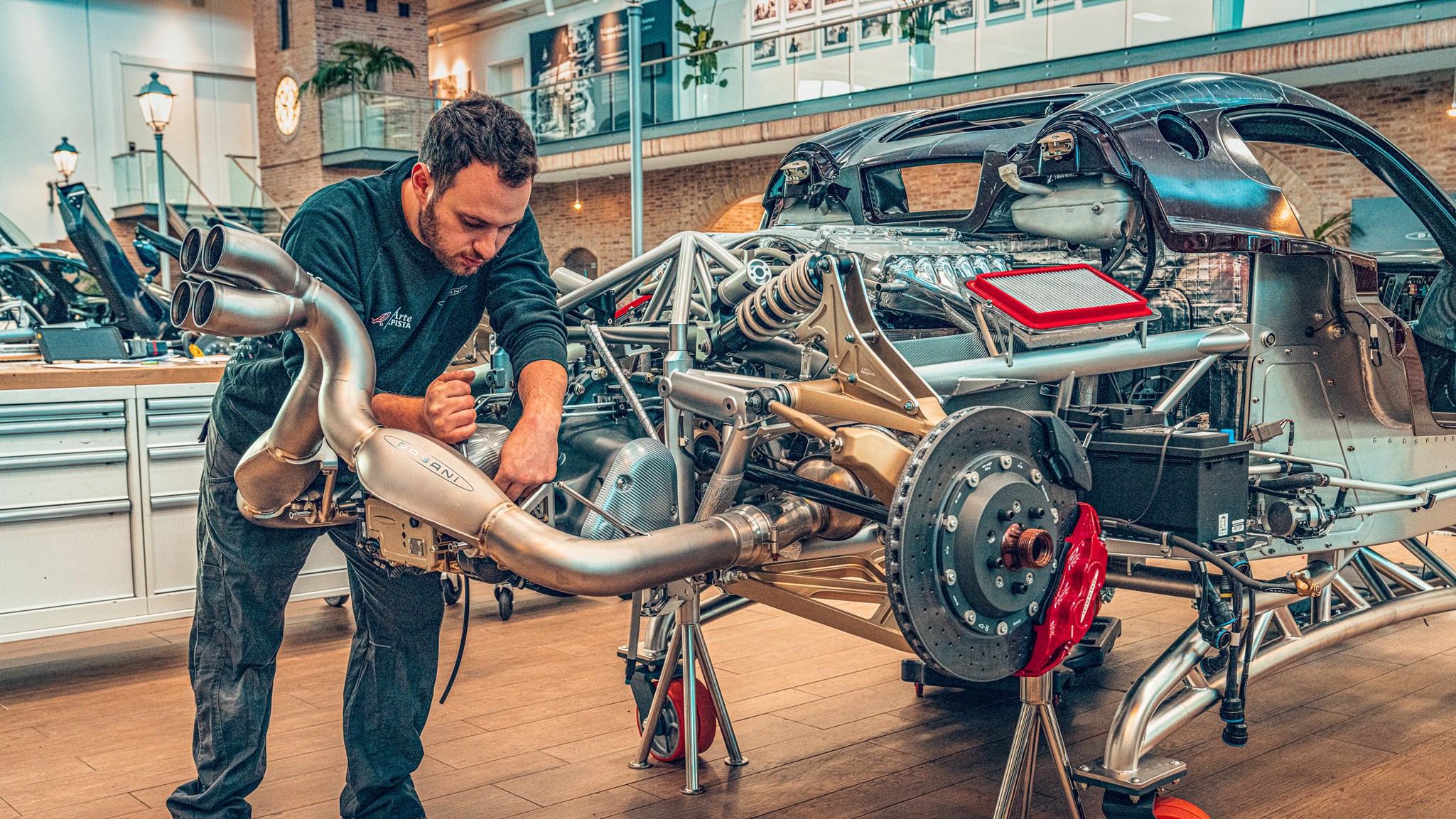
In fact, two customers are the very reason the Codalunga came to be. Both multiple Pagani owners, the pals approached the firm back in 2018 with a very brief brief, focused around the Huayra but with added uniqueness and a sprinkling of inspiration from Le Mans prototypes of the 1960s and 70s.
Simplification was the order of the day, elongating the bodywork (the Codalunga is 307mm longer than a Huayra) and giving it a hand-made look in the best tradition of Italian coach builders. Even at this stratosphere, operating within the confines of what was practical was still a consideration
What are the specs?
The original idea was to use a Huayra donor car – not quite taking a Montego scrapper and bolting on some new bits – but as the project grew, so new realities dawned. The Codalunga was using a new carbon fibre monocoque, tweaked engine (up by 37bhp and now, like the Huayra, running a Pagani-badged Merc V12), new suspension, a different, lighter exhaust; so even at this end of the scale, it was clear that more than two cars would need to be built in order to keep the project solvent.
The monocoque alone, globally homologated with all the crash testing that involves, was a huge investment. It’s even been certified for use in the US, as one of the owners lives over there. Not that £6m ever looks like good value, but when you think of the effort required to build the five cars, at least the sticker price starts to make sense.
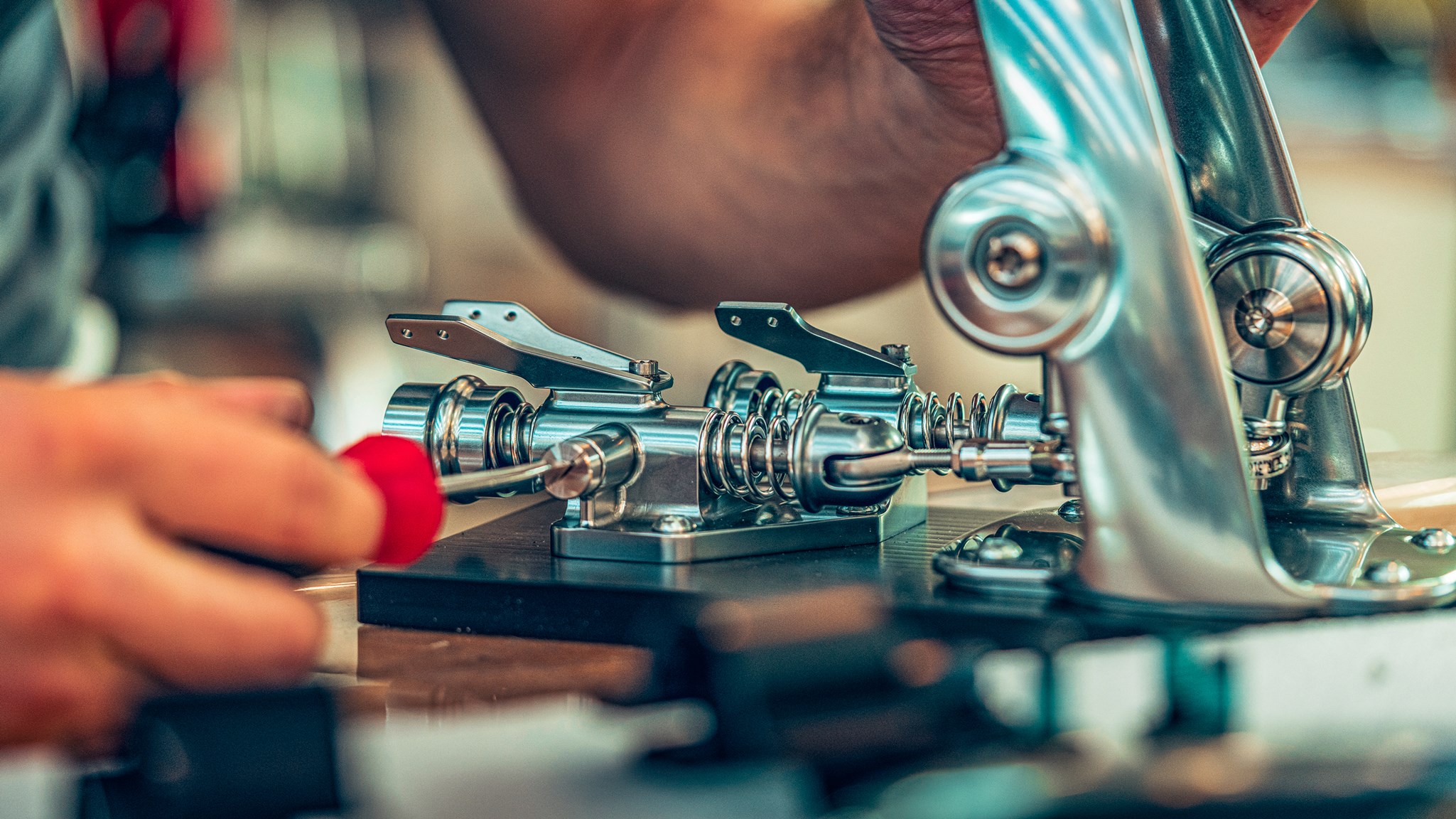
What’s it like to drive?
For a car whose beauty lies in the smoothness of its curves, the Codalunga is surprisingly urgent. There’s never any doubting that a six-litre V12 is sat just behind you, the induction noise, turbo whistle and dump valves combining with the baritone of the V12 to give the car a sense of rawness that you don’t get from the looks.
There’s a sports exhaust button down on the centre console and you’ll want to press that every time you get in the car. It doesn’t scream like a Zonda of old – naturally-aspirated vs forced induction is partly to blame – but there’s a purposefulness to the V12 that echoes off these Italian hills. Inside, the power delivery is smooth and progressive, with all sorts of fun possible from 2000rpm, turbo whistle and dump valve chatter giving audible clues and a heightened sense of self-awareness as I minutely flex my right foot. Gravel pings into the wincingly expensive carbon wheel arches.
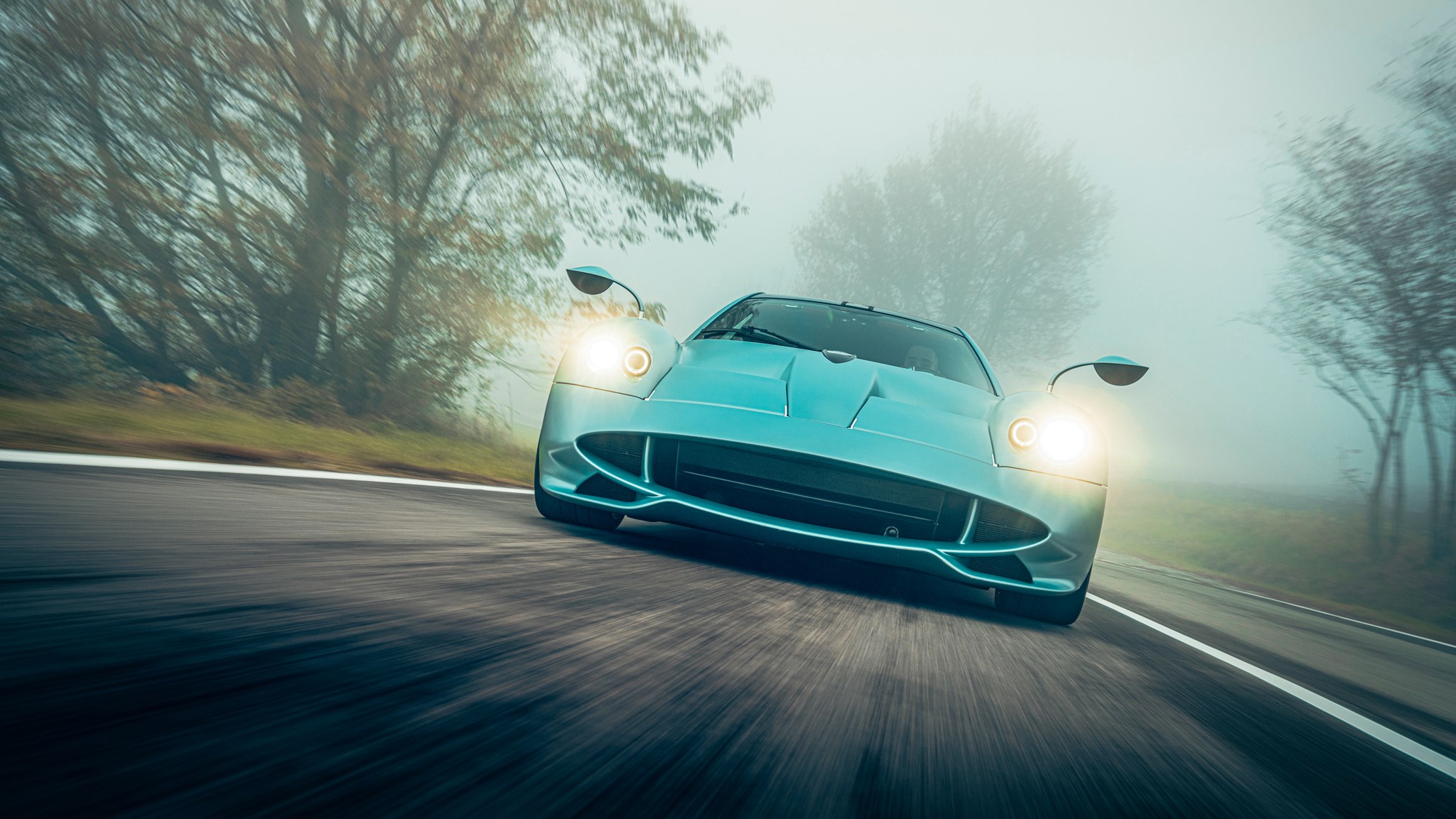
Another contrast as the Codalunga peels further down the road. With the drive mode switch in comfort, the dampers are surprisingly compliant and relax across bumps, body and suspension moving in easy harmony. The steering hunts a bit at these low speeds, but the chassis itself is easy to relax into. Francesco Perini, head of Pagani’s technical department, told me they’d had to revise the suspension because of the Codalunga’s lower drag.
This could all be construed as making the Codalunga sound like a confusion, a car without a clear sense of identity. But as soon as you stop tip-toeing and start to drive, that changes. Sport mode engaged, dampers stiffened up, throttle response upped. All of a sudden, the previous nervousness to the steering and a tendency to follow the idiosyncracies of the tarmac iron themselves out. The steering becomes purposeful and direct, slicing through corners with a precision that was missing five minutes ago. It reminds me of a Porsche 962 – a car that was a handful at low speed, but wonderfully controlled once the downforce kicked in.
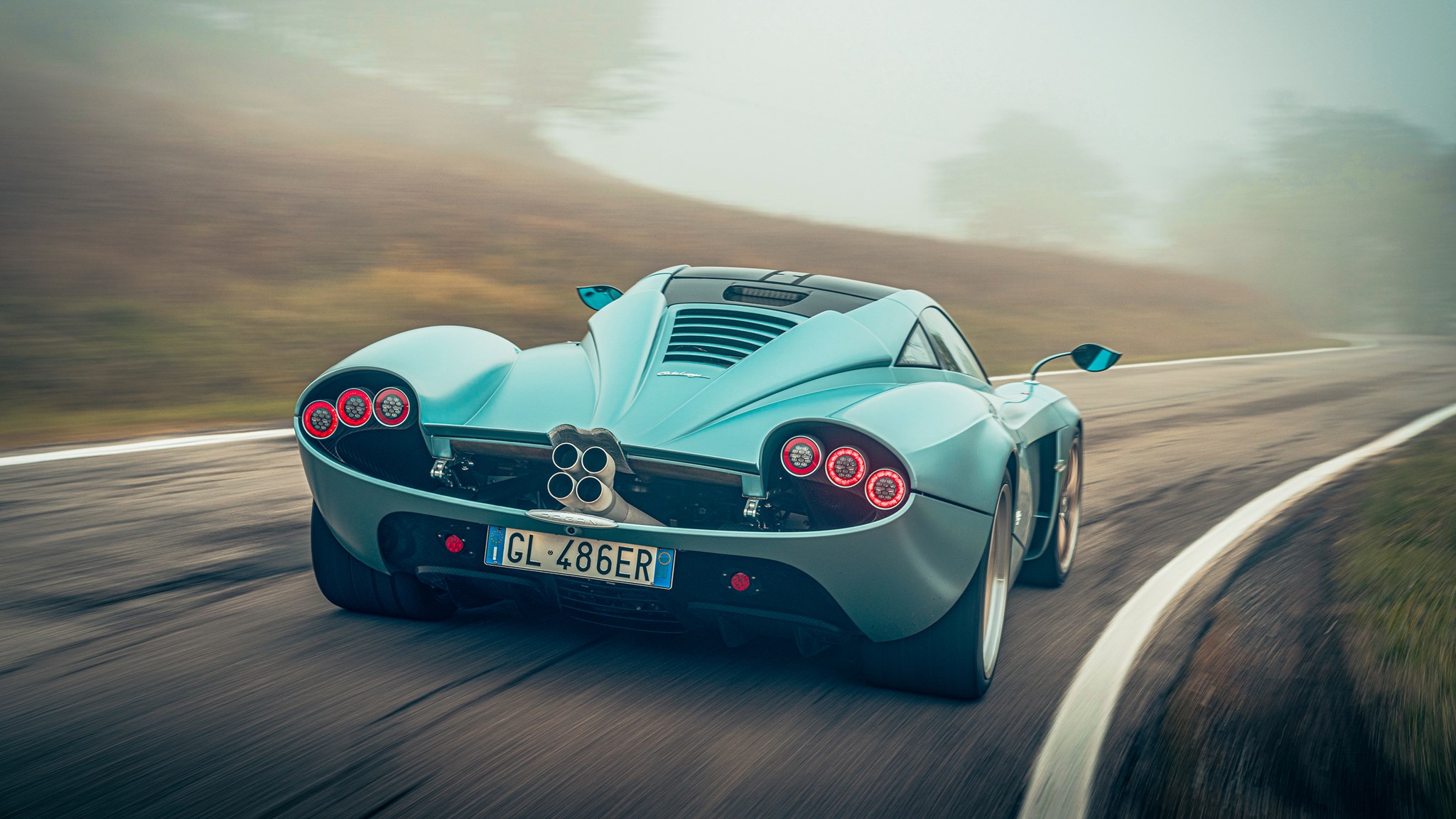
The gearbox requires you to engage brain before upshifting, easing the throttle ever so slightly so the cog swap is smoother. It’s not as awkward as the transmission in the Ferrari Enzo, but it’s not the brain-out dual clutch effort of so many modern cars. Likewise the speed – it piles on with a ferocity and determination that shocks, even in this age of sub-5 EVs. Weighing just 1280kg dry, it’s no wonder that you have to be respectful of the Codalunga’s potential.
What’s the interior like?
Every bit of aluminium is hewn from block, a solidity you can feel as instantly as your backside drops into the seat. It’s instantly recognisable as a Pagani in here – no other brand gets anywhere close to the distinctiveness of a Pagani interior, steam punk meets alien spaceship.
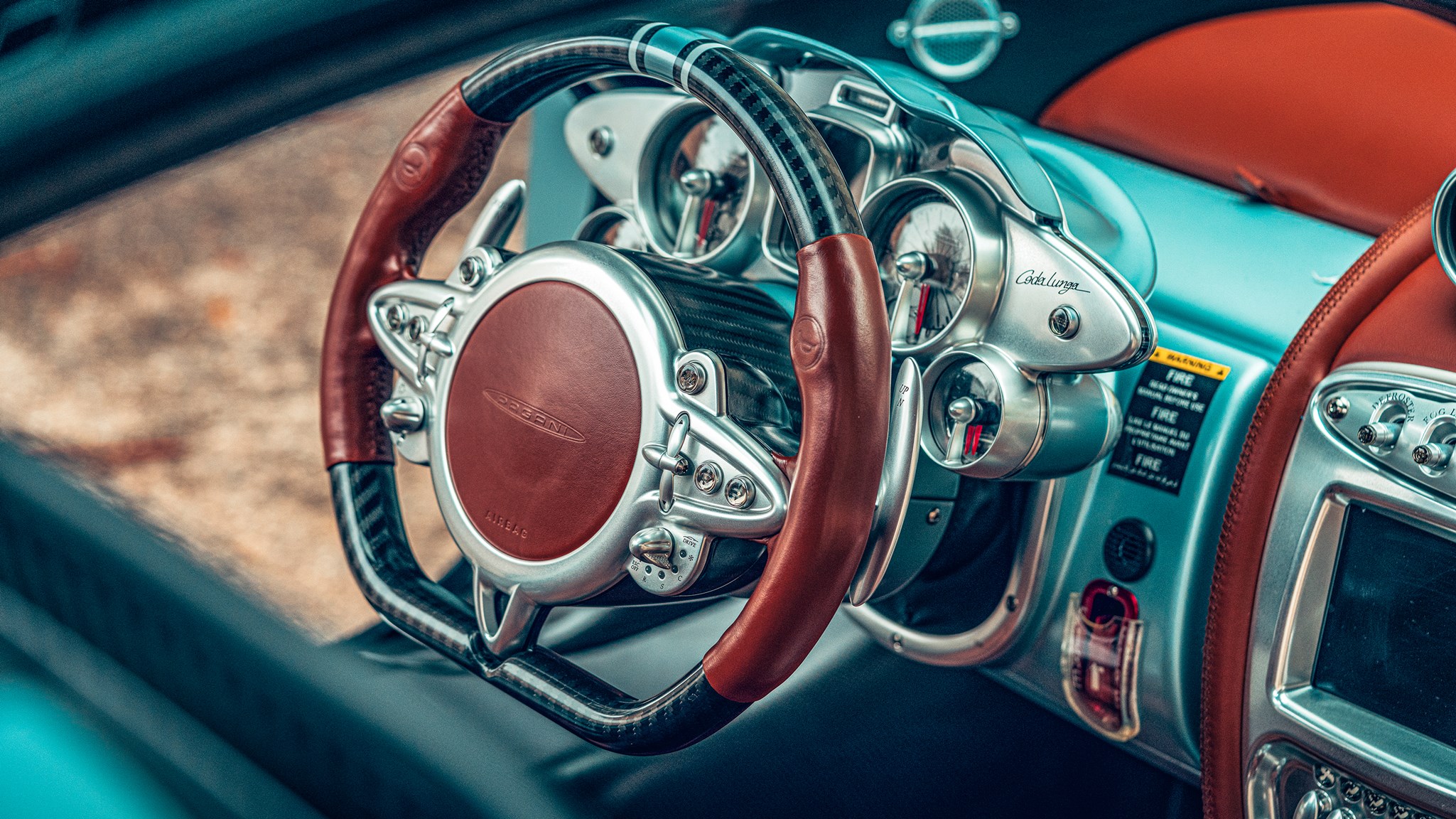
Everything is wonderfully clear and laid out, with the odd nod to modernity in the form of a central display screen, but there are idiosyncrasies. Things like the convex cover on the climate buttons so that ‘auto’ reads like you’re six pints in. And it feels handmade – a Rolls-Royce has a sense of replication about it, like hundreds of cars spent countless hours being thrashed on a test rig to iron out any sense of deflection.
The Pagani is missing that but it really doesn’t matter. And that’s not me trying to be falsely effusive. The Codalunga thrives on its workshop feel, giving it a sense of authenticity. You can sense the humanity that’s been poured into it.
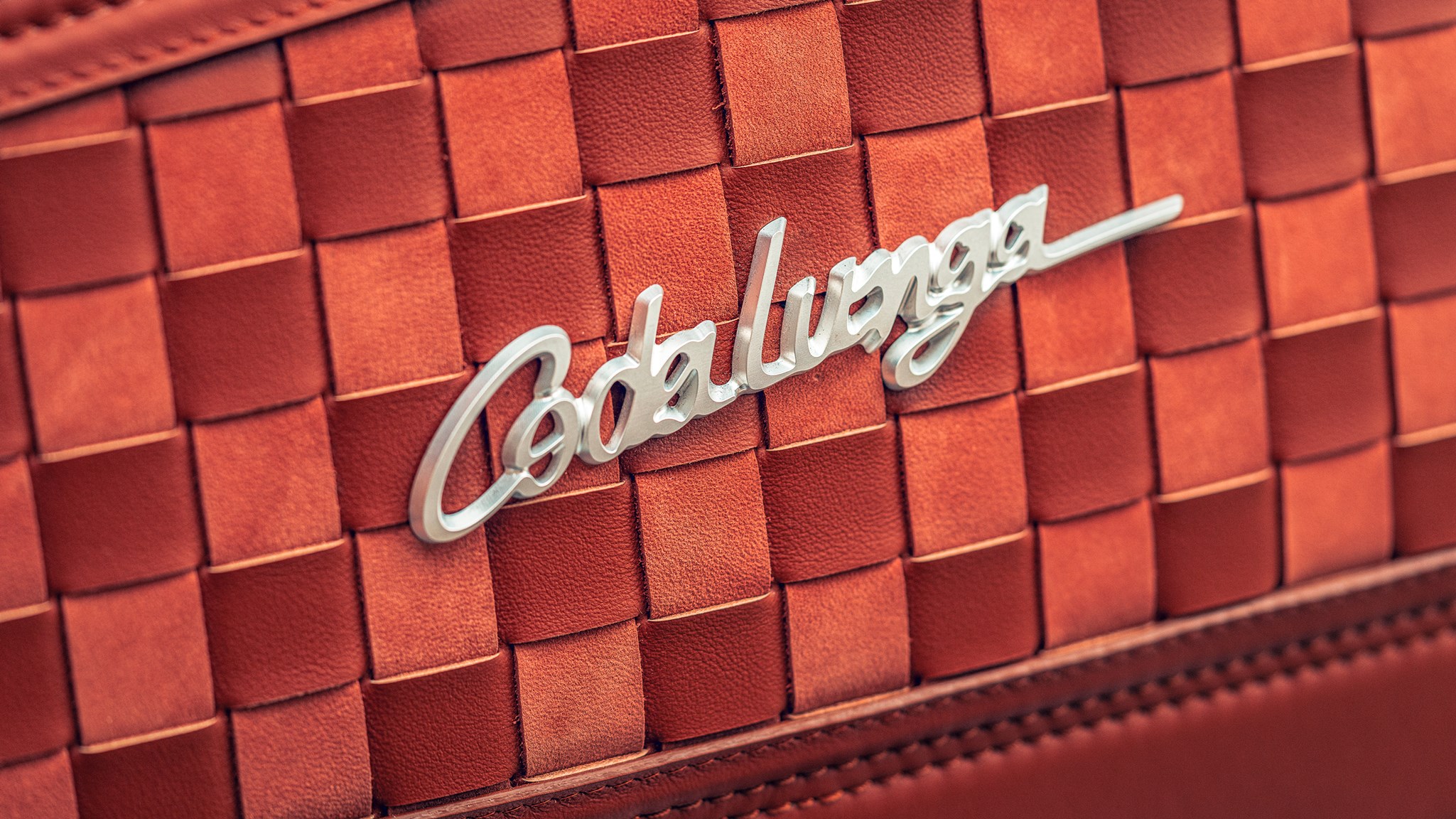
Verdict
Horacio Pagani talks of the ‘art of engineering’ – it’s why there are nods to Leonardo da Vince around the factory and museum. As Pagani explains, ‘It’s challenging to think in a different way, having to combine beauty and engineering’, a constant battle that is at the heart of what Pagani and his company strives to achieve. A Pagani will always be about the combination of the looks and the science, a blend that makes you take note whether it’s moving or stationary.

In a world seemingly in constant flux, it’s reassuring that this corner of Italy still exists and continues to have the same consistency of conviction. Even the one-offs and specials like this Codalunga, despite their differences to the ‘normal’ cars, carry the identical DNA stamp. The billionaires can sleep easy.
Photography by Alex Tapley